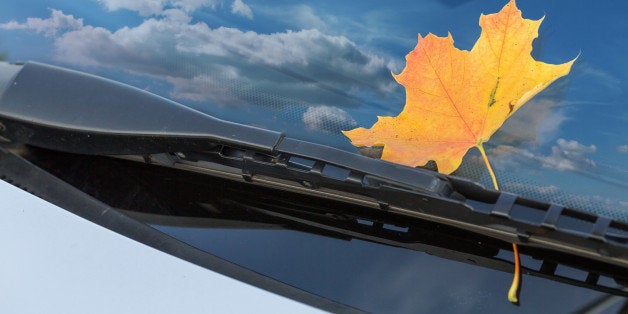
McLaren, maker of the famed F1 supercar of the 1990s, as well as the modern-day 12C and P1, told U.K. newspaper The Sunday Times that it is currently working on a windshield that uses military-derived technology to clear rain and road debris from the windshield without the use of a wiper.
How might a wiper-less windshield work? Theoretically, high-frequency sound waves would blast water droplets and other debris from the window.
Frank Stephenson, McLaren's chief designer, explained the origin of the idea to the Times:
I asked [a military source] why you don't see wipers on some aircraft on when they are coming in at very low levels for landing.
I was told that it's not a coating on the surface but a high frequency electronic system that never fails and is constantly active. Nothing will attach to the windscreen.
The benefits of such a system are numerous. Aside from increasing driver visibility, McLaren's wiper-less windshield will eliminate the added weight and energy consumption of windshield wipers, helping tighten lap times at the track and increase fuel economy on the streets.
The report in The Sunday Times indicates McLaren's intention to release the technology to the public in the coming years, though McLaren told The Huffington Post that the technology is currently "just an idea with no confirmed date of introduction."
Nonetheless, McLaren's wiper-less windshield will likely have to jump some hurdles before it can ever be offered in the U.S. As Federal Motor Vehicle Safety Standard 104 reads, “Each vehicle shall have a power-driven windshield wiping system that … [has] at least two frequencies or speeds.”
The National Highway Traffic Safety Administration told The Huffington Post that McLaren's proposed technology "has not been fully developed," and that "there is not enough information available at this time to determine whether the product would meet existing, applicable federal motor vehicle standards."
But if McLaren’s yet-to-be unveiled system replaces the traditional wiper with sound waves, as some have speculated, it's likely the technology will fail to meet the standards set by FMVSS 104.
The National Highway Traffic Safety Administration informed HuffPost that it considers revising safety standards when its own data and research indicate a needed change, or if a petition is filed asking for a change. Such a petition has yet to be filed regarding the standards set out by FMVSS 104, the Safety Administration said.
As ludicrous as it seems that this regulation may prevent McLaren’s non-wiper tech from entering the U.S., other innovative technologies have been excluded from the U.S. market for similar reasons.
Audi, for one, is hoping the Safety Administration will overturn a regulation requiring all cars to offer headlamps with both high and low beam settings. The company’s Matrix LED headlights, which Bloomberg Businessweek describes as “being made up of numerous LED bulbs that dim or brighten individually based on what cameras and sensors in the car see ahead,” aren’t currently offered on U.S.-market Audis, though they are available elsewhere, due to the fact that the system is dynamic and does not offer the dedicated high and low beam settings U.S. regulations require.
